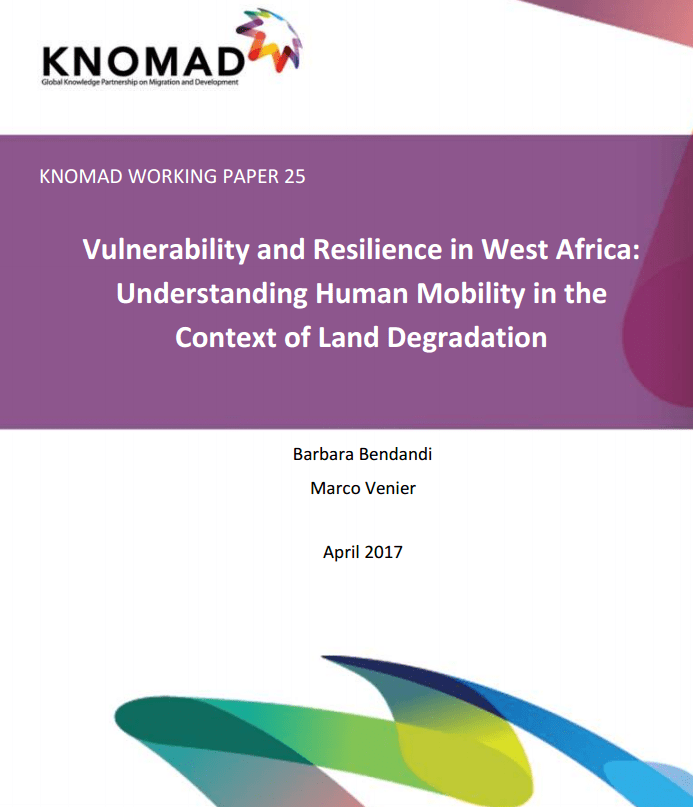
Vulnerability and Resilience in West Africa: Understanding Human Mobility in the Context of Land Degradation
The loss of productive land is often one of the key drivers of human mobility. Land degradation might lead to increases in migration because of the need to diversify incomes, but it can also cause reduced mobility by eroding the financial or physical assets and capital required to finance migration. When on-site adaptation is either impossible or undesirable, migration allows people to modify their exposure to climate and environmental stressors. On one hand, temporary and circular labour migration, internal and international remittances, and family relocation are among the most common strategies used throughout history, and increasingly so in the past decades, to cope with harsh climatic variations, increasingly hostile natural environments, and natural disasters. On the other hand, land abandonment and out-migration can lead to further isolation and marginalization of both vulnerable rural populations (increasing their vulnerability if migration occurs in unplanned ways) and migrants who relocate toward areas of high environmental risk, such as resource-scarce or urban areas within insecure expanding cities. Based on existing evidence on the West Africa region, the research in this paper aims at gaining a better understanding of how land degradation interacts with drivers of migration by analysing the factors determining vulnerability at individual, household, and community levels, as well as those factors affecting capacities—whether inherent or acquired—and strategies that contribute to building resilience

